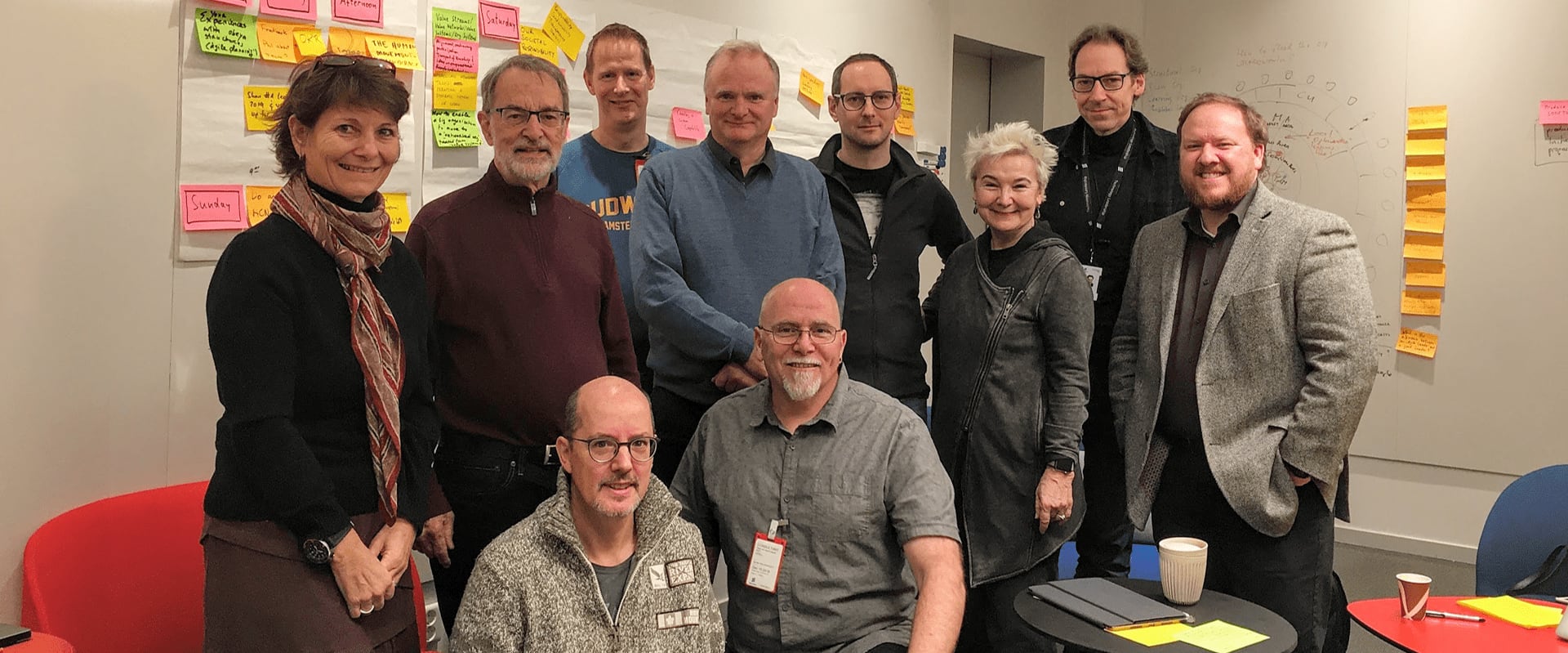The annual Supporting Agile Adoption Initiative face-to-face workshop took place December 13-15. This time, the event was hosted at Ericsson in Stockholm.
As we do every year, a group of selected thought leaders came together to identify, amplify, and potentially set trends around Agile adoption across enterprises. The group is a mix of practitioners from companies, consultants, and researchers who are active in Agile communities and events around the world.
We began with a general conversation and refinement of topics that we wanted to discuss during the weekend.
Three focus areas emerged:
- Everybody’s top insights from 2019
- Organizational design
- “Agile’s” role in and support of sustainability
On the last workshop day, we recorded a special edition of the Agile Coaching Network podcast.
Many interesting things were brought up in the 2019 top insights session. The spectrum of topics was very wide. We talked about:
- The resilience of biological systems and how knowledge about that can be used in companies
- Steve Morlidge’s work on how to present data from a brain science point of view
- Reflexive inquiry as an approach to embrace systems thinking in consultancy/organizational coaching contexts
- Executive Agile Leadership development – emphasizing the aspect of personal value-add to create a stronger pull
- How Obeya structures can support performance dialogues
- Autonomy and cross-organizational networking: How autonomous teams are maybe not the most ideal teams, but the most connected teams in an organization
- How Organizational Agility in the wild is still in its infancy
- How business models beat product strategies
- What motivates young people
- The broad spectrum of coaching skills, practices, and tools in an organization – from individual, over team- and group- towards organizational coaching
- Knowledge-creating companies: the SECI model of knowledge dimensions
- How responsibility and sustainability are starting to become a major disruptive force. (We have seen a few examples, where companies needed to change their business direction because employees didn’t support the direction set by management, for example, CHEF)
We intend to write short articles on some of these topics over the next months.
The organizational design session was triggered by several participants being confronted with the challenge that Business Agility also has a structural dimension, which is not well described today. There are books, like Fredric Laloux’s “Reinventing Organizations” and Steven Denning’s “The Age of Agile”. However, a wider survey of practical organizational patterns that have proven to foster more Business Agility is lacking. We started to draw on the example of Ericsson – a large company with 100,000 employees distributed over the whole globe. We discussed the positive effects of widespread autonomy and self-organization and the related challenge of creating enough alignment. This observation is shared by ING and Spotify and – as we have seen from discussions with people from many other companies – it is a very widely existing challenge: What organizational design patterns enable sufficient alignment while keeping the very positive effects of self-organization/local optimization, which is key to Business Agility?
The discussion wasn’t fully finished, but a couple of insights and conclusions emerged, which will be published via articles. The first outline was recorded in the podcast.
The last session was about sustainability and responsibility and the general question of how the Agile community can contribute to these increasingly important topics. One aspect is taking full responsibility for the products we’re creating. Very often we believe our responsibility ends with the delivery to the customer. However, if the customer uses our product to harm other people (or even the world) we also share some responsibility for that kind of usage of the product (as people did in the example above of CHEF). Another aspect to consider is the consumption of resources for creating and using the product. One forecast calculates that by 2030 IT will account for 21% of the global energy consumption. Thus it gets more and more important to consider energy consumption while we’re developing the product, e.g. via the definition of done and with respective tests. At the same time, the products we create can also improve the carbon footprint of our clients, so we need to leverage IT as well in this aspect. And the last but not least aspect is transparency or rather sharing of learnings. Individual companies might discover ways to improve their own and their ecosystem’s sustainability. Yet only if these learnings are shared and the effort to improve sustainability is a collaborative one can we really make a difference.
Now you might think companies are not interested in these investments. However, we predict that societal responsibility will be the key factor that decides the survival of companies both in terms of finding talent and clients.



![[Case Study] Lessons from descaling 25 Scrum teams](https://www.agilealliance.org/wp-content/uploads/2024/12/descaling-teams-1200x630-1-150x150.jpg)



![[Case Study] Lessons from descaling 25 Scrum teams](https://www.agilealliance.org/wp-content/uploads/2024/12/descaling-teams-1200x630-1-300x158.jpg)

